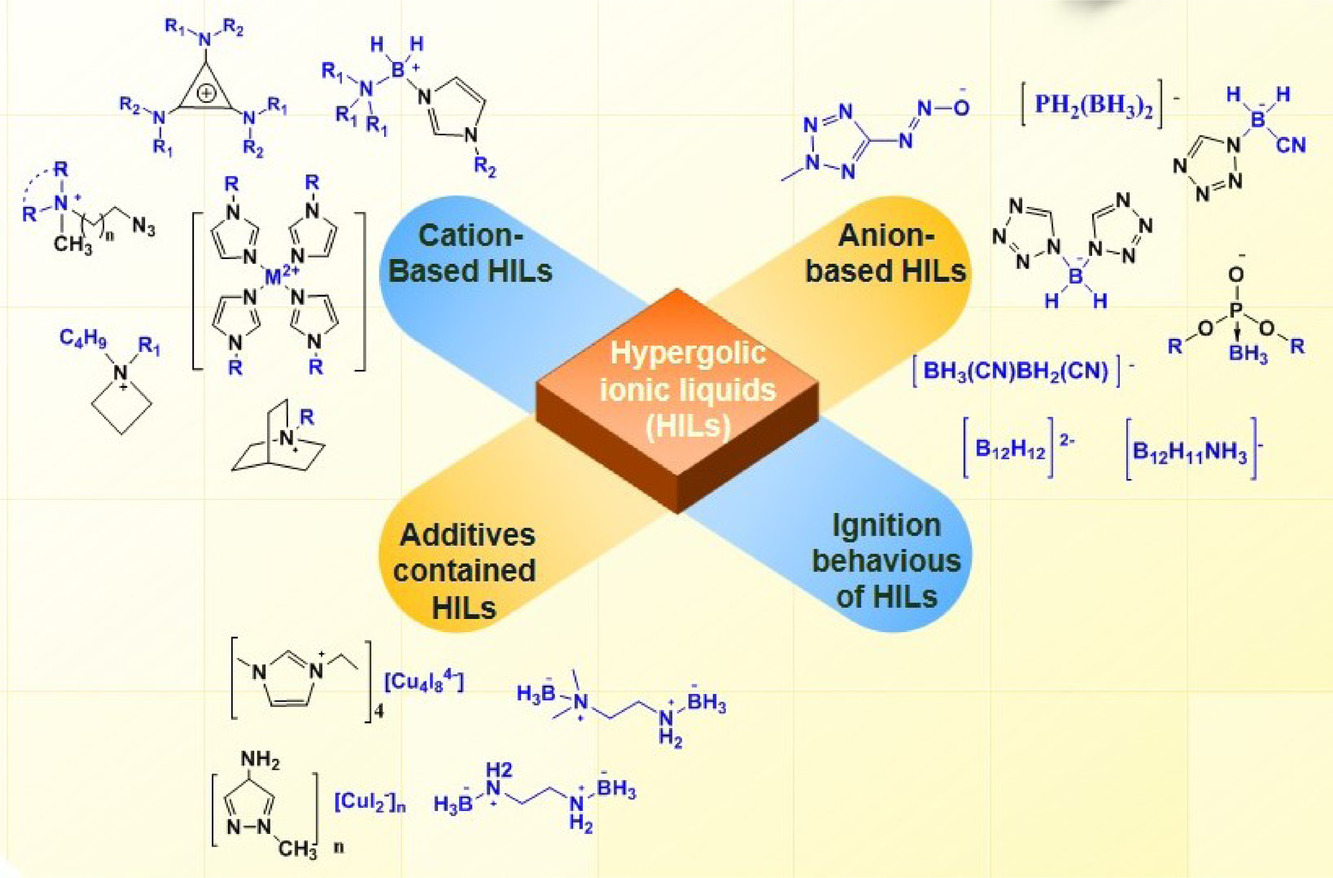Como una opción prometedora de combustibles propulsantes de nueva generación, los líquidos iónicos hipergólicos (HIL) han atraído un gran interés en los últimos años, principalmente en el campo espacial. El diseño y síntesis de nuevos líquidos iónicos (IL) son la base del desarrollo de los HIL. Se han creado muchos HIL a través de diseño racional, y sus propiedades y aplicaciones hipergólicas se han estudiado ampliamente. El objetivo de este documento es mostrar las nuevas tendencias en el área de investigación de HIL, y presentar los últimos desarrollos, incluyendo síntesis, propiedades, relación estructura-propiedad y sus aplicaciones en el campo de los bipropulsantes líquidos. Y también se discuten los problemas y desafíos futuros.
Abstract
As a promising choice of new-generation green propellant fuels, hypergolic ionic liquids (HILs) have attracted a great deal of interest in recent ten years, illustrated by their applications in the field of space science and exploring outer space. The design and syntheses of new ionic liquids (ILs) are the basis of the HILs’ sustainable development. In the recent years, many new HILs have been created through the rational design, and their hypergolic property and applications have been studied extensively. With the aim of familiarizing the reader with new trends in the area of HILs research, in this review we present the latest developments of new HILs including syntheses, properties, structure-property relationship and their applications in the field of liquid bipropellants, while the debatable issues and future challenges that need to be addressed are also discussed. Through this review, we intend that more readers may learn about the newest trends in the field of ionic liquid propellants, and it may also provide an additional catalyst for the vigorous development of new-generation green space propellants.
Graphical Abstract
The latest developments of recent five years including syntheses, properties, structure-property relationship and their applications in the field of liquid bipropellants are summarized. We believe that there will have new structural innovations and applications of new HILs in the coming several years, which also demonstrates new opportunities to be green fuels of aerospace systems.
Fuente: https://www.sciencedirect.com


